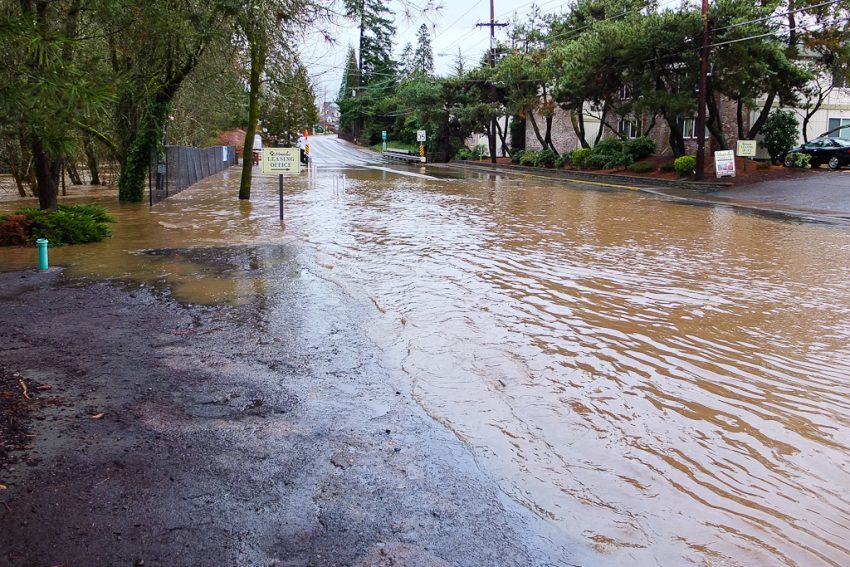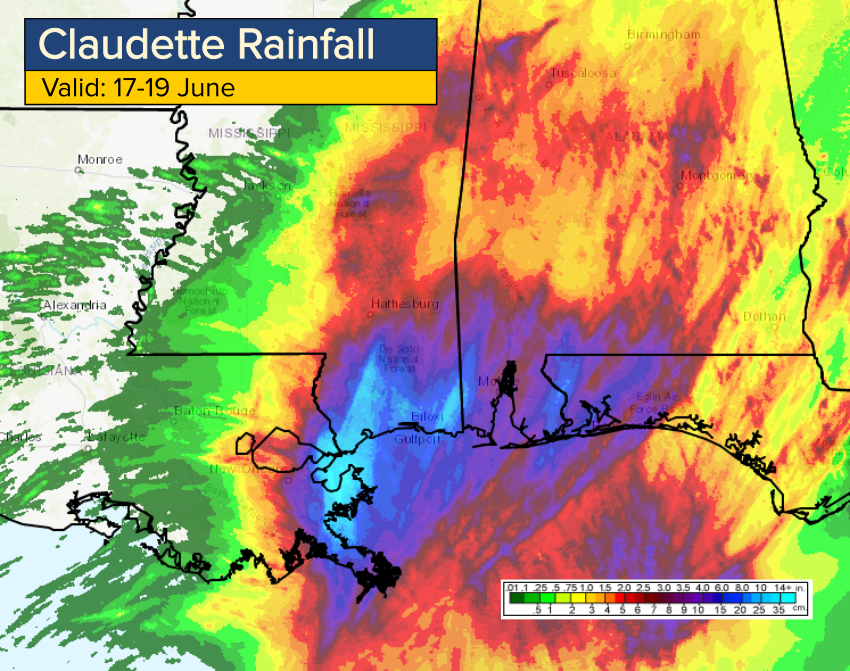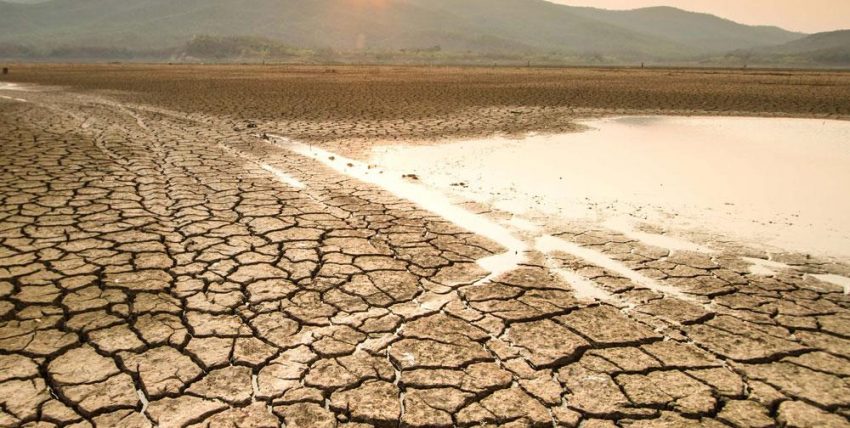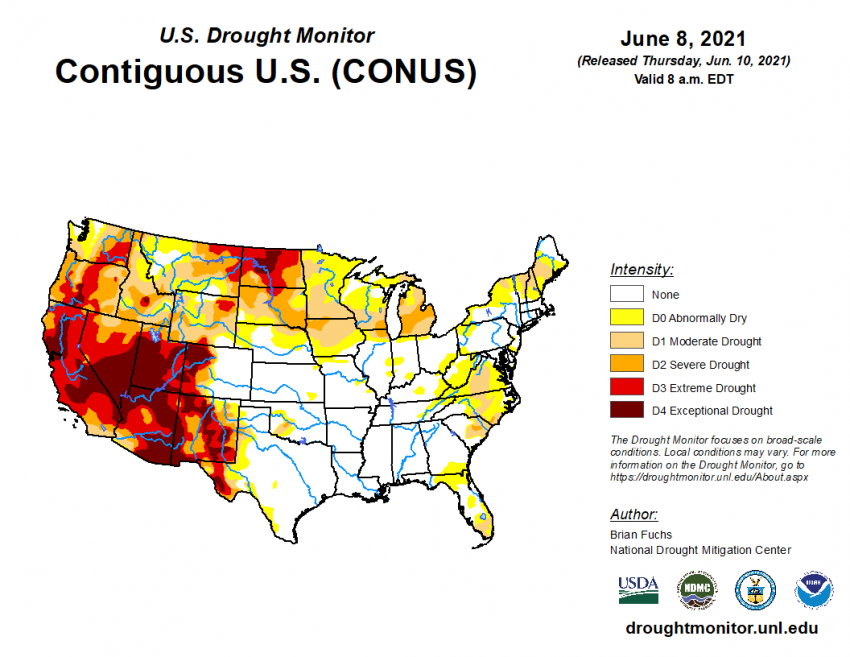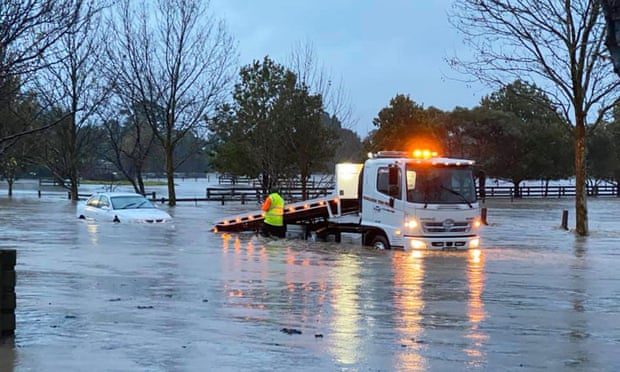Once In A Lifetime Heatwave Bakes Northwestern U.S./Southwestern Canada
The U.S. Pacific Northwest and southwestern Canada are currently in the midst of a dangerous and historic heatwave, unlike ever seen before in this region of the world. Since Saturday, record high temperatures across the region have not just been broken, but have been downright obliterated. These records have not been just daily and monthly, but all time records. This heatwave, the result of an extensive dome of upper level high pressure, known as a ridge, is so rare that the likelihood of occurrence is once a millennium or greater.
“Pacific Northwest bakes under once in a millennium heat dome” | I discussed the role climate change is playing with Jeff Berardelli (aka @WeatherProf) for @CBSNews: https://t.co/AsD3TD7aJW
— Michael E. Mann (@MichaelEMann) June 27, 2021
When looking at the numbers, they are truly staggering, and more typical of the American Southwest than the Northwest. Sunday’s high of 104 degrees (40 C) in Seattle, Washington is the highest temperature ever recorded in that city, besting the previous record of 103 degrees (39.4 C) set in 2009. That was after hitting 102 degrees (38.8 C) on Saturday. The first time that the city reached the century mark during two consecutive days. Previously, Seattle has only hit 100 degrees (37.7 C) or above on three other occasions. The city even had a record high low when the minimum temperature on Sunday morning only reached 73 degrees (22.7 C), the highest low ever recorded.
There have been several instances of road impacts across Western Washington today, including along I-5 at times. Additional impacts likely tomorrow with another day of extreme heat. Remain vigilant on your commutes! #wawx https://t.co/ZTRnTrdecV
— NWS Seattle (@NWSSeattle) June 28, 2021
Even more impressive than Seattle, were the numbers reached in Portland, Oregon. On Sunday the mercury rose to a sweltering 112 degrees (44.4 C) shattering the previous all time record high of 107 degrees (41.6 C) set in 1981, and that’s after Saturday’s high of 108 degrees (42.2 C) already hit that milestone. Most noteworthy, however, is the high of 116 degrees (46.6 C) in Lytton, British Columbia. This temperature is the highest temperature ever recorded in all of Canada, surpassing the previous all time high of 113 degrees (45 C) set in 1937.
🇨🇦 Canada didn’t just beat its long-standing all-time national heat record…
It knocked it out of the park by a staggering +1.6°C. This record wont even last 24 hours, the heatwave is just getting started.
It is only June. Annual highest temperature is normally in late July! pic.twitter.com/83K3F1ACXN
— Scott Duncan (@ScottDuncanWX) June 28, 2021
These extremely high temperatures would be tough to handle in any other location, but what makes this situation more dangerous and unique is that many people that live in this corner of the globe do not have air conditioning. With average daytime highs in the mid to upper 70s (23-25 C) during the summer, the need for air conditioning is minimal, and heatwaves of this magnitude, or in general, are not common.
IR can be a fascinating way to visualize a heat wave.
Watch the western US darken as temperatures max out the https://t.co/HMFoAysEaC colorbar, well over 100°F.
I’ve labeled some other noteworthy features on one of the more historic days in recent US/Canada weather history. pic.twitter.com/sXVaiDUceA
— Jake Carstens (@JakeCarstens) June 28, 2021
The searing heat has already led to thousands of people throughout Oregon and Washington losing power, as well as countless others being admitted to the hospital with heat exhaustion. Because of this, cooling centers have been opened without any limits on capacity. Hotels have also been booked solid, a boon for an industry decimated by Covid, as residents seek an air conditioned refuge.
Athletes race in extreme heat at Olympic Trials in Oregon:
The extreme heat wave impacting Oregon forced organizers of the U.S. Olympic Team Trials for Track and Field to reschedule competitions for athlete safety. @BillWadell was on the scene. https://t.co/zIYiEZdcqX pic.twitter.com/bnJIzxcxjs
— AccuWeather (@accuweather) June 27, 2021
More records are likely to fall by the waist side in the coming days as the heat rages on. The forecast highs of 111 degrees (43.8 C) in Seattle and 113 degrees in Portland (45 C) on Monday would again be new all time record highs. Areas further to east may top out in the 115-120 degrees ( 46-49 C) range. Exacerbating the heatwave is the ongoing severe drought throughout much of western North America.
Dangerous heatwave raging along the western side of North America will intensify over the coming days.
The hottest part of the year in US Pacific Northwest & BC Canada is usually not until late July. We are seeing all-time records fall and it is only June.
Absolutely brutal. pic.twitter.com/33pO7eeBrT
— Scott Duncan (@ScottDuncanWX) June 27, 2021

